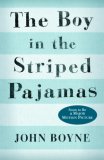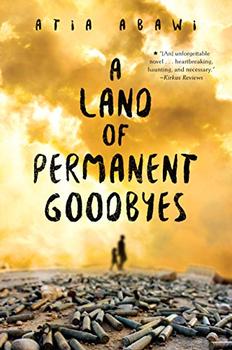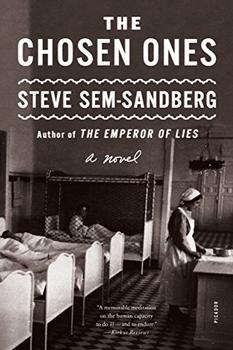Summary | Excerpt | Reading Guide | Reviews | Beyond the book | Read-Alikes | Genres & Themes | Author Bio

A Fable
by John BoyneGermany 1942: Bruno's family moves to a new house, where he he meets another boy whose life and circumstances are very different to his own. Their meeting results in a friendship that has devastating consequences.
Berlin 1942
When Bruno returns home from school one day, he discovers that his belongings are being packed in crates. His father has received a promotion and the family must move from their home to a new house far far away, where there is no one to play with and nothing to do. A tall fence running alongside stretches as far as the eye can see and cuts him off from the strange people he can see in the distance.
But Bruno longs to be an explorer and decides that there must be more to this desolate new place than meets the eye. While exploring his new environment, he meets another boy whose life and circumstances are very different to his own, and their meeting results in a friendship that has devastating consequences.
Review contains plot spoilers:
The Boy In The Striped Pajamas is presented as a fable, flagging to the reader up front that one is expected to disengage ones normal sense of reality and accept the story as given, but in this instance, when dealing with such an emotive, well recorded and historically recent subject as the Holocaust, this is difficult to do. Everything hinges on the reader accepting Bruno's overwhelming naivety at face value. Is it really credible that nine-year-old Bruno, who lives and goes to school in Berlin and is the son of a senior SS officer, is oblivious to the war, and doesn't know who Hitler is, or what a Jew is - but in other respects is both observant and intelligent?
When his family arrive at Aushwitz, Bruno and his 12-year-old-sister are conveniently the only children in the vicinity, other than those on the other side of the fence. This again stretches credibility because historical records show that about 6,000 SS officers were posted at Auschwitz, so it seems extremely unlikely that other children would not have been around. Then there is the issue of how Bruno could possibly have talked with his friend on the other side of the fence for months without being seen, or ever comprehending that Shmuel is starving (he absentmindedly brings him food from time to time but usually ends up eating most of it on the way). Not to mention the inconvenient detail that by 1942 most young children arriving at the camps were gassed on arrival.
On the other hand, Boyne hits a few powerful notes - such as Bruno's father's response to his question about the people inside the fence - "they're not people at all Bruno"; and his mother's comment that "we don't have the luxury of thinking".
As a fable, this is a powerful tale, and if you can read it as such all well and good (I can't); but as a vehicle for explaining the defining tragedy of the 20th century to young people it falls embarrassingly short...continued
Full Review
 (619 words)
(619 words)
(Reviewed by BookBrowse Review Team).
Auschwitz was the name the Germans used for the Polish city of Oswiecim when they occupied it in WWII. The concentration camp was established nearby in June 1940, taking the name of the nearby town. The camp quickly expanded into three main parts: Auschwitz I, Auschwitz II-Birkenau, and Auschwitz III-Monowitz - a group of about 40 sub-camps. In 1942, when the mass exterminations began, the camps (the largest complex of extermination camps in the Reich) became the site of the greatest mass murder in the history of humanity, with the majority of the arrivals being gassed on arrival in the Birkenau gas chambers.
Between 1.1 to 1.6 million people were killed there, about 90% were Jews, plus many Poles, Soviet prisoners-of-war and Roma (gypsies)...

If you liked The Boy in the Striped Pajamas, try these:

by Atia Abawi
Published 2019
Narrated by Destiny, this heartbreaking - and timely - story of refugees escaping from war-torn Syria is masterfully told by a foreign news correspondent who experienced the crisis firsthand.

by Steve Sem-Sandberg
Published 2017
Passionately serious, meticulously researched, and deeply profound, this extraordinary and dramatic novel bears witness to oppression and injustice, and offers invaluable and necessary insight into an intolerable chapter in Austria's past.